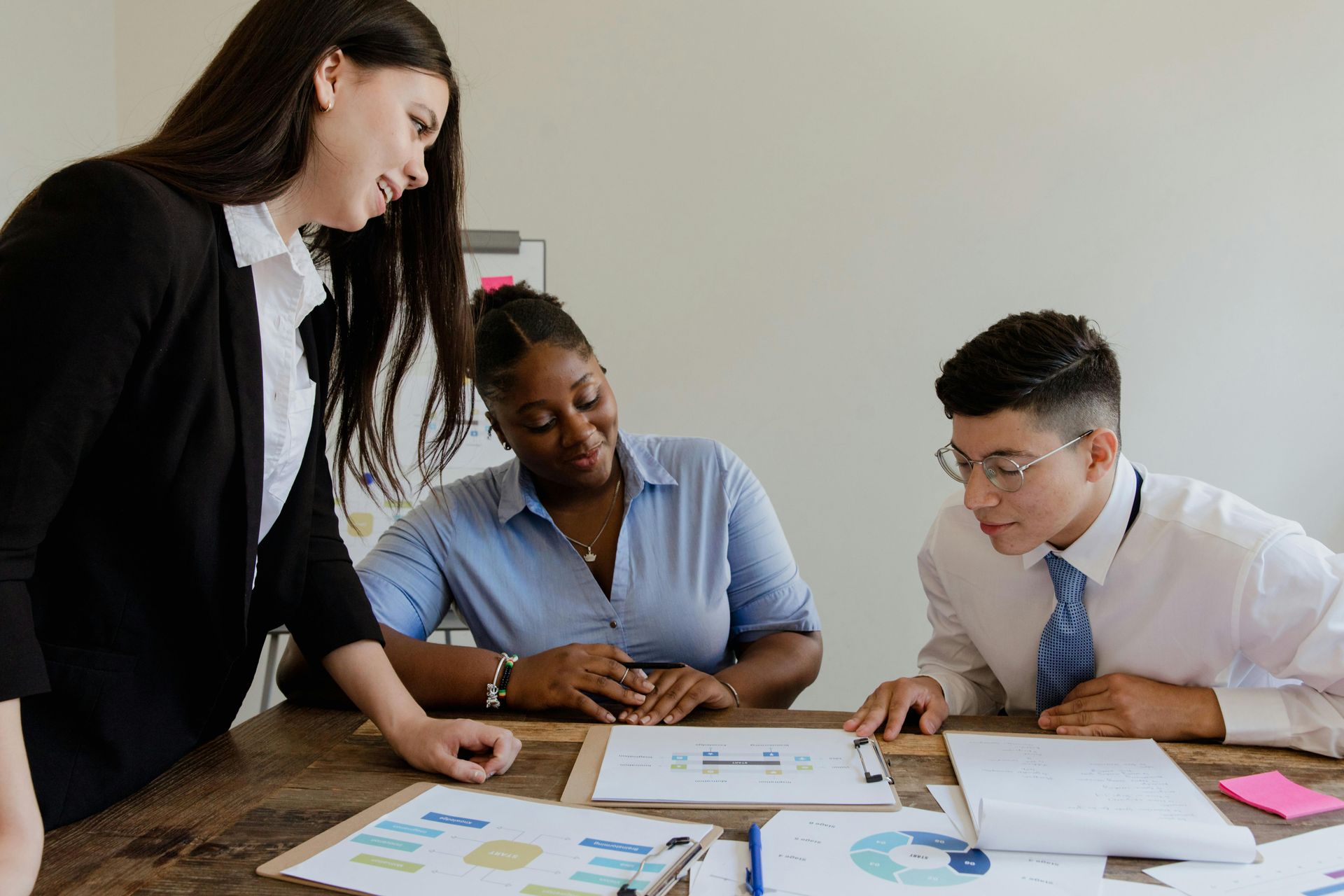Fringe Remittance Failures: Lessons from Real Industry Penalties

In the world of entertainment payroll, few mistakes snowball into seven-figure disasters quite like fringe remittance failures. When pension, health, and welfare contributions fall through the cracks, the financial consequences can be staggering. Whether it's MPIPHP, the AFTRA Retirement Fund, or the DGA Producer Health Plan, these organizations rely on accurate and timely contributions. And when those contributions are missed or misreported, they come back with interest—both financial and regulatory.
Payroll professionals and production accountants face nonstop chaos. From last-minute cast hires to constantly changing call sheets, the landscape is unpredictable. Unfortunately, amid the whirlwind, fringe contributions are often overlooked until it is too late.
This article explores anonymized real-world examples of fringe remittance breakdowns and provides critical lessons that productions of all sizes should take to heart.
Case Study 1: The Phantom Week
Production Type: Tier 1 High-Budget SVOD Series
Issue: Fringe remittance missed due to a retroactive onboarding
Cost: More than $350,000 in back payments, penalties, and interest
A popular streaming series experienced delays onboarding several crew members who began work before their start packets were finalized. The production issued make-up payments once the paperwork was processed. However, the payroll company generated pension and health contributions based on the date payroll was issued, not the actual dates of work. Because the workweek in question fell into a prior reporting cycle, the contributions were never reconciled.
The problem came to light during a routine audit by MPIPHP nine months later. Plan auditors compared pay stubs to remittance data and uncovered the discrepancy. The production was held responsible for the missing contributions and charged penalties for each month the payments were delayed. Total damages crossed the $350,000 mark.
Lesson: Contributions must align with the week the work occurred, not the week payment was made. Always reconcile fringe reports against workweeks, especially when onboarding is delayed or timecards are processed late.
Case Study 2: The Non-Union Misclassification
Production Type: Limited Theatrical Feature
Issue: Union crew members were incorrectly flagged as non-union
Cost: $112,000 in underreported benefits and penalty assessments
This feature film used a mix of union and non-union crew. The payroll accounting team accidentally coded three IATSE members as non-union during onboarding assuming their jobs were not covered by their agreement. As a result, the payroll provider did not withhold union dues or remit fringe benefits to the IATSE National Benefit Fund as they did with their other union crew members.
The issue remained unnoticed until one of the workers attempted to access health benefits and was denied coverage. That call triggered a union audit. The benefit fund determined the error amounted to willful neglect and issued a penalty under its delinquency enforcement rules.
Lesson: Union membership should never be assumed based solely on occupation or title. Always verify union status using rosters and communicate any discrepancies between the crew list and payroll records before the first payroll cycle. Mistakes in union designation can impact member health coverage and lead to major liability.
Case Study 3: The Missed Reshoot Day
Production Type: Episodic Broadcast Drama
Issue: One-day work by a DGA UPM went unreported for fringe purposes
Cost: $65,000 including penalties and attorney fees
A UPM worked one reshoot day several weeks after wrapping principal photography. The production issued a check for the day worked but did not include it in the DGA pension and health contribution report. Production assumed the day was outside the original scope of the agreement and treated it as a flat-rate non-covered payment.
When the UPM later attempted to vest the workday toward their benefits, the union discovered the fringe had not been paid. The DGA initiated a review and determined that the day counted as covered employment. The production was required to make a late fringe payment with interest, and legal counsel was brought in to resolve the dispute.
Lesson: Contributions are required anytime a DGA-covered employee performs work, regardless of whether the day falls during production or during pickups. Even one day of covered employment must be reported. Never assume that one-off or late workdays are exempt from fringe requirements.
Case Study 4: The Retro Pay Trap
Production Type: Scripted Digital Short Series
Issue: Retroactive wage adjustments were not accompanied by fringe recalculations
Cost: $40,000 in unpaid benefits and correction costs
In this case, background actors were initially underpaid due to a misunderstanding about wardrobe changes that triggered additional compensation. After post-production review, the error was corrected and retroactive payments were issued. However, the payroll company treated the adjustments as gross-only payments and did not generate new fringe contributions.
Months later, the SAG-AFTRA Health Plan contacted the production regarding missing earnings. An audit revealed that the contributions based on the additional payments were never submitted. The plan imposed penalties and required full payment with interest.
Lesson: Retroactive increases in wages almost always trigger additional fringe contributions. Whenever gross pay is adjusted, notify your payroll provider so that pension and health recalculations can be made. Do not assume that one-time adjustments are exempt.
Common Red Flags That Precede Fringe Failures
There are recurring risk factors in these kinds of mistakes. Manual overrides of union status, inconsistent use of occupation codes, or onboarding delays can all lead to remittance breakdowns. Production often assumes that payroll companies will catch these mistakes, but many of these issues originate with how crew members are classified, coded, and onboarded before payroll is ever run.
Another red flag is a lack of communication between production and the payroll provider. Fringe liabilities may arise when changes are made—such as retroactive pay increases, pickups, or reclassifications—but not reported to the provider. Without a formal process to track adjustments or confirm remittance details, gaps in benefit funding are almost inevitable.
How to Protect Your Production
1. Build a Weekly Fringe Review Process
Fringe remittances should be reviewed weekly against call sheets, timecards, and crew lists. Compare each week’s payroll output to the expected benefit obligations. Pay special attention to out-of-cycle or retroactive payments.
2. Create a Union Status Verification Protocol
Use rosters, prior employment records, or confirmation from union representatives to verify whether each employee is union or non-union. Do not rely solely on what is checked on the start form or crew deal memo.
3. Track All Adjustments in a Centralized Log
Every pay correction, rate change, or retroactive adjustment should be logged and reviewed weekly. This log should be shared with the payroll company to ensure fringe recalculations occur in a timely manner.
4. Run Internal Audits
Do not wait for the benefit plan to discover a mistake. Simulate an audit using actual remittance reports and compare them to pay stubs and weekly call sheets. If you discover discrepancies, correct them proactively.
5. Document Everything
Keep all onboarding documents, signed timecards, and payroll reports in one accessible location. Having thorough records will be critical during union or benefit fund audits, especially if you need to demonstrate good faith.
The Bottom Line
Fringe remittance mistakes are not just accounting errors. They can have far-reaching consequences, affecting worker benefits, delaying health coverage, and exposing the production to lawsuits or penalties. In a fast-paced industry where timelines are tight and compliance is complex, avoiding fringe failures requires intentional systems and open communication.
Productions must treat fringe contributions with the same urgency and precision as gross payroll. That means confirming union classifications, aligning contributions with actual work dates, and reporting retro pay accurately.
The best way to avoid an audit surprise is to act like one is coming. If your process can stand up to scrutiny today, you’ll be protected when the benefit funds come knocking tomorrow.









